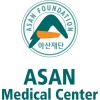
Perforated Marginal Ulcer After Gastric Bypass
Ulcer Disease After Gastric BypassMarginal Ulcer2 moreA common late complication after gastric bypass surgery is marginal ulceration that is defined as ulcers at the margins of the gastrojejunostomy, mostly on the jejunal side. Most marginal ulcers respond to medical therapy and complicated or complex ulcer disease warrants operative intervention; specifically, perforated, penetrated, obstructing, bleeding and intractable marginal ulcers require surgical intervention. Diverse operative strategies for addressing perforated marginal ulcers after gastric bypass have been described including I) Omental (Graham) patch repair, II) Revision of gastrojejunostomy, III) Irrigation and drainage, IV) any previous procedure with truncal vagotomy, V) Esophagojejunostomy, and VI) Reversal. We formally analyze our experience with the laparoscopic resection and repair of acutely perforated marginal ulcers after Roux-en-Y gastric bypass (RYGB), with or without concomitant resolution of technical risk factors for marginal ulceration.

Evaluation of the PillCam™ Colon Capsule Endoscopy (PCCE) in Detection & Classification of Ulcerative...
Colonic DiseaseUlcerative ColitisTo evaluate the ability of the PillCam® Colon Capsule Endoscope to detect and classify Ulcerative colitis

NBI With Magnification for Dysplasia Detection in Ulcerative Colitis
Ulcerative ColitisThe purpose of the study is to determine whether a new colonoscopic viewing technique called narrow band imaging (NBI) helps doctors detect more patients with at leat one pre-cancerous area (dysplasia associated lession or mass, MALMs) than conventional colonoscopy using white light alone.

Russian Extremely Severe Ulcerative Colitis Study
Ulcerative ColitisInflammatory Bowel DiseasesThe purpose of this study is prove the need to selection of a extremely severe ulcerative colitis, to identify predictors of colectomy, which will reduce the optimal time for surgery.

The Influence of Biologcal Treatment on the Short-Term Complications of Surgery in Patients With...
Ulcerative ColitisAnti TNF Therapy1 moreBACKGROUND: Previous studies of short-term surgical outcomes after preoperative exposure to anti-TNF therapy in ulcerative colitis (UC) patients who have undergone IPAA have been conflicting. We sought to determine whether preoperative exposure to anti-TNF therapy affects histological measures of fibrosis in the colorectum, which may be a potential factor in adverse anastomosis complications following IPAA surgery. METHODS: Individuals who received infliximab as maintenance therapy and who received their last dose within 180 days of the first stage of IPAA were selected. The control group comprised UC patients who were not exposed to anti-TNF therapy, matched by age, sex, BMI, disease duration, albumin levels, and post-operative leak outcome. Hematoxylin and eosin- (H&E) and trichrome-stained slides from the most distal, well-oriented, full-thickness section of colorectum from each patient's total colectomy specimen were evaluated. Blinded assessment of the degree of fibrosis in the lamina propria, the submucosa, the submucosa immediately adjacent to the muscularis propria, and the subserosa was performed by a single observer using a semi-quantitative pictorial scale.

Surveillance in Ulcerative Colitis: Narrow Band Image Versus Chromoendoscopy for High-risk Groups...
Ulcerative ColitisDysplasiaThe risk of colorectal cancer (CRC) is increased in patients having ulcerative colitis (UC). Patients with long-standing extensive colitis, concomitant primary sclerosing cholangitis, or previous history of dysplasia carry an exceptionally high risk of CRC and require regular and short-interval surveillance colonoscopy. Recent guidelines recommend surveillance colonoscopy based on target biopsy rather than random biopsy applying chromoendoscopy (CE) or narrow band image (NBI) technique in UC at risk for CRC. However, the diagnostic yield of NBI-based surveillance and CE-based surveillance is not extensively investigated in the high-risk UC population. The investigators aimed to compare the dysplasia detection rate of NBI with that of CE in UC patients with a high risk of CRC by performing a multicenter, randomized controlled trial.

Bleeding Ulcer and Erosions Study "BLUE Study"
Bacterial Infection Due to Helicobacter Pylori (H. Pylori)Peptic Ulcer1 moreA prospective study of bleeding peptic ulcers and/or erosions in the upper gastrointestinal tract - risk-medication, presence of Helicobacter pylori, treatment and outcome.

Korea Post-marketing Surveillance for Xeljanz (Registered) in Ulcerative Colitis Patients
Ulcerative ColitisAs required for new medications approved by the Ministry of Food and Drug Safety, safety and efficacy information should be provided for a minimum of 90 patients treated in the setting of routine practice during 4 years following approval (until 19 September 2022). Out of all the enrolled patients, at least 18 cases (20%) will be followed up until the 52nd week to see the long term safety of Xeljanz.

Interactive Telehealth for Pressure Ulcer Prevention After SCI
Spinal Cord InjuriesPressure UlcerThe goal of this module project is to establish the efficacy of a portable sensor and app-based biofeedback technology system for promoting effective pressure relief behaviors and reducing risk of pressure ulcer development among wheelchair users. In collaboration with the participating SCIMS centers, the investigators will conduct a randomized clinical trial of education and goal setting alone compared to education and goal setting combined with the biofeedback system (SENSIMAT®) that is commercially available.

A Study of Pariet to Prevent Gastric and Duodenal Ulcer Associated With Low-aspirin in Korean Participants...
Stomach UlcerDuodenal UlcerThe purpose of this study is to understand the following safety related particulars associated with the use of Pariet Tablet 5 milligram (mg) to prevent gastric and duodenal ulcer from low dose aspirin administration of 100 mg or less daily in participants with a history of gastric and duodenal ulcer: 1. Serious adverse events (SAEs) and adverse drug reactions (ADRs) 2. Unexpected adverse events (AEs) and ADRs not reflected in the precautions for use 3. Known ADRs 4. Non-serious ADRs 5. Other safety and efficacy related information.
